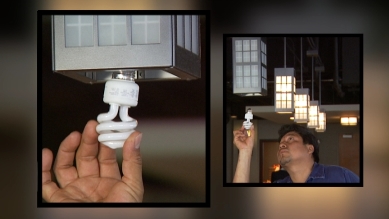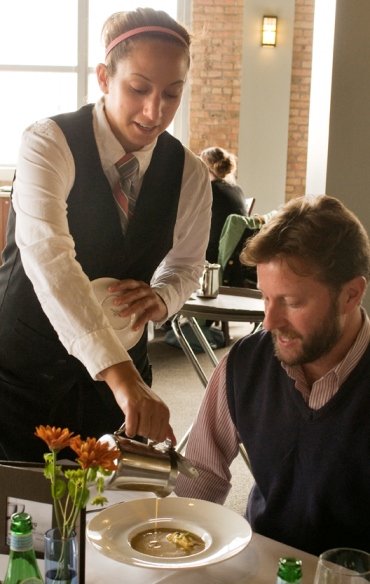Mayo’s Clinics: Expanding the Range of Activities—Pairs
Sunday, 31 October 2010 07:04By Dr. Fred Mayo, CHE, CHT
 Forming dyads requires students to clarify their own thinking before sharing it with another student, and then discuss it before sharing it with the entire class.
Forming dyads requires students to clarify their own thinking before sharing it with another student, and then discuss it before sharing it with the entire class.
Last month, we discussed using current events in the classroom. This month, we will talk about strategies for using more and varied learning activities in our classroom by focusing on pairs.
Most of us have developed a series of strategies for working with small groups. This Mayo’s Clinic may remind some of you why they are helpful and suggest new ways to work with pairs of students in your classes.
Reasons for Pairs
Using pairs—often called dyads—In class is a way to help students feel comfortable discussing a topic that is new to them or one in which they do not feel well prepared, either because of difficulty learning the material, the lack of time spent studying or for some other reason. By letting them talk with just one other student, they can start to build a vocabulary for the topic and some confidence about the topic. It also enables them to learn from someone else who may know more or less; either way, it can be a learning experience.

 Chef Weiner continues his advice for students on selecting and maintaining knives. This month: the difference between sharpening and honing and the definition of “true.”
Chef Weiner continues his advice for students on selecting and maintaining knives. This month: the difference between sharpening and honing and the definition of “true.” Turn-key teaching tools for sustainability.
Turn-key teaching tools for sustainability. The day of the frumpy, inattentive waiter is gone. In the current economy, properly training wait staff has never been more important.
The day of the frumpy, inattentive waiter is gone. In the current economy, properly training wait staff has never been more important. From the American Lamb Board, a primer that covers everything from U.S. sheep production to menuing lamb.
From the American Lamb Board, a primer that covers everything from U.S. sheep production to menuing lamb. In an effort to highlight the importance of Culinology, the blending of culinary arts and the science of food, the Research Chefs Association announces: My Culinology Experience. The RCA wants to hear from you. That's why the organization is putting on a search for the best video that spotlights your relationship to Culinology—its effect, its appeal, its challenges!
In an effort to highlight the importance of Culinology, the blending of culinary arts and the science of food, the Research Chefs Association announces: My Culinology Experience. The RCA wants to hear from you. That's why the organization is putting on a search for the best video that spotlights your relationship to Culinology—its effect, its appeal, its challenges! The Culinary Institute of America, in collaboration with the Singapore Institute of Technology (SIT) and Temasek Polytechnic, has announced that it will begin offering its Bachelor's Degree Program in Culinary Arts Management in Singapore early in 2011.
The Culinary Institute of America, in collaboration with the Singapore Institute of Technology (SIT) and Temasek Polytechnic, has announced that it will begin offering its Bachelor's Degree Program in Culinary Arts Management in Singapore early in 2011. Plugrá® European-Style Butter hosted Della Gossett, chef instructor at The French Pastry School at City Colleges of Chicago and former executive pastry chef of Charlie Trotter’s in Chicago, for a culinary demonstration at the American Culinary Federation (ACF) National Convention, Aug. 2-5 in Anaheim, Calif. During “Trade Secrets for Exquisite Plated Desserts,” the renowned pastry chef explored how to create innovative menu-enhancing desserts, drawing inspiration from fresh seasonal ingredients, classic recipes, and contemporary influences.
Plugrá® European-Style Butter hosted Della Gossett, chef instructor at The French Pastry School at City Colleges of Chicago and former executive pastry chef of Charlie Trotter’s in Chicago, for a culinary demonstration at the American Culinary Federation (ACF) National Convention, Aug. 2-5 in Anaheim, Calif. During “Trade Secrets for Exquisite Plated Desserts,” the renowned pastry chef explored how to create innovative menu-enhancing desserts, drawing inspiration from fresh seasonal ingredients, classic recipes, and contemporary influences.